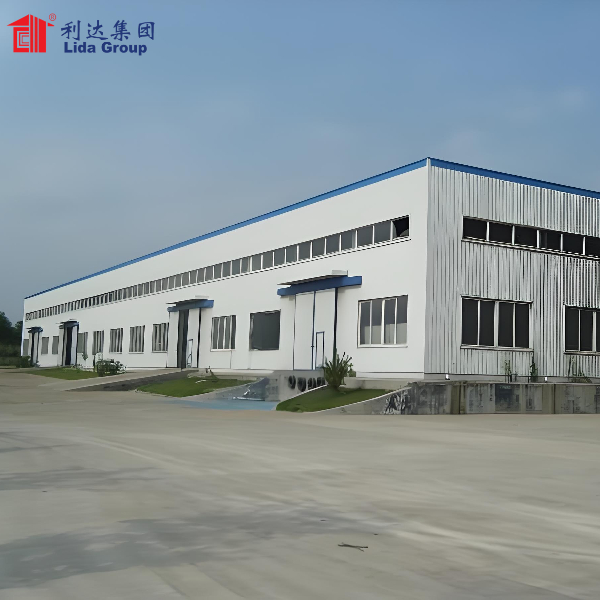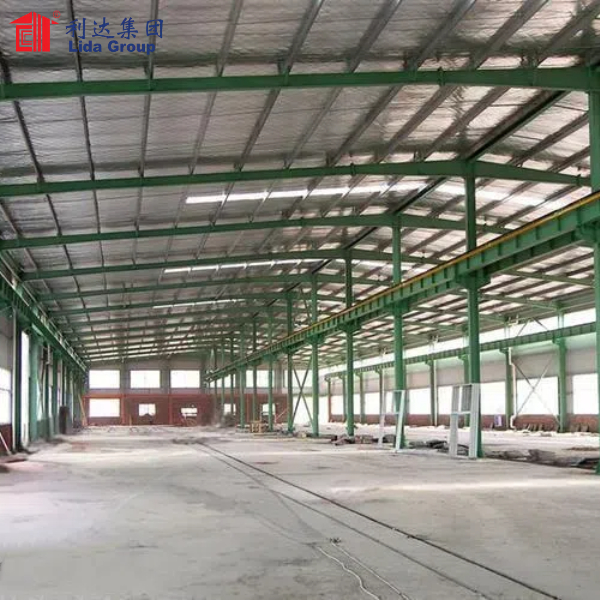Introduction
In the realm of modern construction, the choice of materials plays a pivotal role in determining the durability, efficiency, and sustainability of buildings. Steel structure buildings have emerged as a popular solution, offering numerous advantages across various sectors. This article delves into the benefits of steel structure buildings from the perspective of Lida Group, a leader in the construction industry, exploring how their innovative designs and practices are shaping the future of construction.
Understanding Steel Structure Buildings
What Are Steel Structure Buildings?
Steel structure buildings are constructed primarily using steel frames and components. These structures are known for their strength, stability, and versatility, making them suitable for a wide range of applications, including commercial, industrial, and residential buildings.
Key Components of Steel Structures
- Steel Beams and Columns: These form the backbone of the structure, providing support and stability.
- Steel Plates: Used for floors, roofs, and walls, offering durability and resistance to various environmental factors.
- Connections and Fasteners: Essential for assembling the structure, ensuring that all components work together seamlessly.
Lida Group: A Leader in Steel Construction
Company Overview
Lida Group has established itself as a prominent player in the steel construction industry. With a commitment to quality and innovation, the company has successfully delivered numerous steel structure projects worldwide.
Vision and Mission
Lida Group’s mission is to provide high-quality steel structure solutions that enhance efficiency, safety, and sustainability. The company envisions a future where steel structures become the standard for modern construction.
Benefits of Steel Structure Buildings
1. Strength and Durability
Steel is renowned for its exceptional strength-to-weight ratio. This characteristic allows for the construction of taller and more expansive structures without compromising stability. Key advantages include:
- Resistance to Natural Disasters: Steel structures can withstand extreme weather conditions, including earthquakes and high winds.
- Longevity: Steel is resistant to pests, rot, and corrosion, ensuring a long service life with minimal maintenance.
2. Cost-Effectiveness
While the initial investment in steel structures may be higher than traditional materials, the long-term cost savings are significant. Factors contributing to cost-effectiveness include:
- Reduced Construction Time: Prefabricated steel components can be assembled quickly on-site, reducing labor costs and project timelines.
- Lower Maintenance Costs: The durability of steel minimizes the need for repairs and replacements over time.
3. Design Flexibility
Steel structures offer unparalleled design flexibility. Architects and engineers can create innovative and aesthetically pleasing buildings that meet specific client requirements. Key aspects include:
- Open Floor Plans: Steel allows for larger spans without the need for internal columns, creating versatile spaces.
- Customizable Designs: Steel components can be easily modified to accommodate changes in design or function.
4. Sustainability
As the construction industry progresses towards more sustainable practices, steel structures stand out for their eco-friendly attributes. Benefits include:
- Recyclability: Steel is 100% recyclable, and many steel structures are made from recycled materials, reducing environmental impact.
- Energy Efficiency: Steel buildings can be designed with energy-efficient features, such as insulation and solar panels, contributing to lower energy consumption.
5. Safety
Safety is a paramount concern in construction. Steel structure buildings provide enhanced safety features, including:
- Fire Resistance: Steel is non-combustible, reducing the risk of fire spread and improving overall safety.
- Structural Integrity: Steel’s strength ensures that buildings can withstand loads and stresses, protecting occupants and contents.
Lida Group’s Approach to Steel Structure Construction
Innovative Design Techniques
Lida Group employs cutting-edge design techniques to maximize the benefits of steel structures. Some of these techniques include:
- 3D Modeling: Utilizing advanced software for precise modeling and visualization, ensuring that all components fit together seamlessly.
- BIM (Building Information Modeling): Enhancing collaboration among stakeholders, reducing errors, and improving project efficiency.
Prefabrication and Modular Construction
Lida Group’s commitment to prefabrication allows for greater efficiency in the construction process. Key advantages include:
- Quality Control: Components are manufactured in a controlled environment, ensuring consistent quality.
- Speed of Assembly: Prefabricated elements can be quickly assembled on-site, reducing construction time and minimizing disruptions.
Commitment to Sustainability
Lida Group is dedicated to sustainable practices throughout its projects. Efforts include:
- Sourcing Recycled Materials: Where possible, using recycled steel and other materials to reduce environmental impact.
- Energy-Efficient Designs: Incorporating features that enhance energy efficiency, such as natural lighting and ventilation systems.
Applications of Steel Structure Buildings
1. Commercial Buildings
Steel structures are ideal for commercial buildings, offering vast open spaces and flexible layouts. Examples include:
- Office Buildings: Designed for functionality and aesthetics, steel office buildings promote collaboration and productivity.
- Retail Spaces: Steel structures can accommodate large retail environments, providing flexibility for displays and customer flow.
2. Industrial Facilities
Lida Group specializes in constructing steel structures for industrial use, such as:
- Warehouses: Providing ample storage space with the ability to expand as needed.
- Manufacturing Plants: Steel structures can support heavy machinery while allowing for efficient workflow.
3. Residential Projects
Steel is increasingly being used in residential construction for its durability and design flexibility. Benefits include:
- Modular Homes: Prefabricated steel homes offer an affordable and quick solution for housing needs.
- Custom Designs: Homeowners can design unique steel structures tailored to their preferences.
4. Infrastructure
Steel structures are essential for various infrastructure projects, including:
- Bridges: Steel’s strength allows for the construction of long-span bridges that can accommodate heavy traffic.
- Sports Facilities: Steel structures provide the necessary support for large crowds and equipment.
Case Studies of Lida Group’s Steel Structure Projects
Case Study 1: An Innovative Office Complex
Lida Group completed a cutting-edge office complex featuring:
- Open Floor Plans: Encouraging collaboration and flexibility in workspace design.
- Energy-Efficient Systems: Incorporating solar panels and advanced HVAC systems to reduce energy consumption.
The project has become a model for sustainable office design.
Case Study 2: A State-of-the-Art Warehouse
For a leading e-commerce retailer, Lida Group designed a massive warehouse that included:
- High Ceilings and Wide Aisles: Facilitating efficient storage and movement of goods.
- Automated Systems: Enhancing inventory management and order fulfillment processes.
The warehouse has significantly improved the retailer’s operational efficiency.
Case Study 3: A Modern Residential Development
Lida Group constructed a series of modular homes using steel, showcasing:
- Quick Assembly: Reducing construction time and costs for affordable housing solutions.
- Customizable Designs: Allowing homeowners to personalize their living spaces.
This project has addressed the growing demand for affordable housing in urban areas.
The Future of Steel Structure Buildings
1. Advancements in Technology
As technology continues to evolve, the construction industry will see advancements such as:
- 3D Printing: Potentially revolutionizing the way steel components are manufactured.
- Smart Building Technologies: Integrating IoT devices for enhanced energy management and operational efficiency.
2. Increased Demand for Sustainable Solutions
With growing awareness of environmental issues, the demand for sustainable construction practices will rise. Steel structure buildings will play a crucial role in this transition, offering:
- Eco-Friendly Materials: Continued emphasis on sourcing recycled and sustainable materials.
- Energy-Efficient Designs: Innovations that further reduce energy consumption and environmental impact.
3. Global Expansion
As Lida Group continues to expand its reach, the company is poised to meet the growing demand for steel structure buildings worldwide. This expansion will involve:
- International Collaborations: Partnering with global firms to deliver innovative projects.
- Adaptation to Local Markets: Tailoring solutions to meet the unique needs of different regions.
Conclusion
Steel structure buildings offer a multitude of benefits, making them an ideal choice for modern construction. From strength and durability to sustainability and cost-effectiveness, the advantages of steel structures are significant.
Lida Group’s commitment to innovation and quality positions it as a leader in the steel construction industry. By employing advanced design techniques, prefabrication, and sustainable practices, Lida Group is shaping the future of construction.
As industries evolve and the demand for efficient, durable, and sustainable buildings grows, steel structure buildings will continue to play a vital role. Lida Group is not just building structures; it is building a sustainable future for generations to come. The journey of steel construction is just beginning, and the possibilities are endless.
Contact Us
Post time: Sep-04-2024


